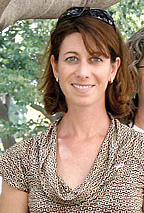Creating Civic Engagement
Deliberative polling class provides a look at how information is processed
February 4, 2008
by Valerie Orleans
Immigration and health care — two topics that cause a stir in local and national politics. For one political science class this spring, those issues will serve as a springboard to determine how people make decisions about them.
Under the direction of Pam Fiber-Ostrow, assistant professor of political science, the class will focus on deliberative polling where researchers (students, in this case) learn what the public thinks about certain issues, and, more importantly, if they would change their minds when provided with additional information.
Cal State Fullerton is one of 16 universities nationwide participating in a civic engagement program as part of the American Democracy Project, sponsored by the American Association of State Colleges and Universities. CSUF is the only California university involved in the deliberative polling project.
“Working in conjunction with the university’s Social Science Research Center, students will develop a phone survey that will be administered to 800 CSUF students,” Fiber-Ostrow said.
Her students will analyze the survey findings regarding their peers’ opinions on immigration and health care.
On April 12, 2008 to 250 students who answer the original survey will be asked to attend a daylong program featuring experts in health care and immigration, representing both sides of these issues. If students agree to attend the program, they will be provided with a briefing document that discusses the topics in more detail and provides facts and figures to support or deconstruct theories.
At the April program, audience members, after listening to the experts, will break into small groups and discuss what they’ve learned. They will join other groups periodically throughout the day. Fiber-Ostrow’s class will be involved in facilitating the program, analyzing the follow-up data and preparing press releases.
“We want to enrich our audience’s understanding of the issues and help them see the different dimensions to these often polarizing subjects,” Fiber-Ostrow said. “At the conclusion of the day, we will conduct the original survey again. The idea is to see whether learning and deliberating on specific topics can change people’s opinions and, if so, by what degree. This is a hands-on experience for the students to apply social science research, to see how people think and process information on issues relating to our democracy. This program allows our students to put into practice some of the skills they have acquired and see how this information can affect people’s beliefs and actions.”


